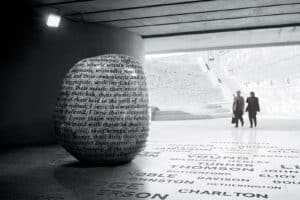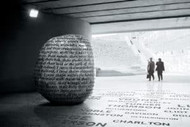Reiver's Curse Stone
Posted by Charles MacGregor on Aug 7th 2018
Reiver's Curse Stone
Written for The Celtic Croft by Charles MacGregor of MacGregor Historic Games.
The "Border Reivers" were raiders along the Anglo-Scottish border primarily from the late 13th century to the beginning of the 17th century. Although their heyday is said to have been during the last century of that period. A good deal of the border country is mountain and moorland, good for grazing, but with relatively little farm-able land. In addition, the region continued an inheritance system called gavelkind, by which the estate of a family was divided equally between all sons upon a man's death. As a result, many of the heirs received parcels that were too small to maintain them. Further, due to the frequent wars between England and Scotland the border areas were periodically devastated by the competing armies. As a result, it's little wonder that people took to raiding and marauding as a way to survive. Although most raids occurred within a day or so ride of border, attacks reached as far north as the outskirts of Edinburgh, and as far south as Yorkshire.
Although these fierce people were sometimes seen as a first line of defense against invasion, they often did not actually ally themselves with either kingdom, but were loyal to family and kin. Neither crown, nor church could do much to restrain their depredations. But in 1525, Gavin Dunbar, Archbishop of Glasgow (c. 1490–1547) decided to launch at least a spiritual war against the Reivers. He issued a 1000-some word "Monition of Cursing" that was to be read out in all the churches in the Scottish Borders and not only cursed the Reivers, but their horses, their clothing, their crops, and all who aided them in any way.

An excerpt:
‘I curse thair heid (head) and all the haris (hairs) of thair heid; I curse thair face, thair ene (eyes), thair mouth, thair nose, thair tongue, thair teith, thair crag (chin), thair schuderis (shoulders), thair breast, thair hert, thair stomok, thair bak, thair armes, thair leggis, thair handis, thair feit, and everilk (every) part of thair body, frae the top of thair heid to the soill of thair feit, befoir and behind, within and without.’
‘… I curse thaim etand (eating), I curse thaim drinkand (drinking), I curse thaim walkand (walking), I curse thaim sleepand( sleeping)… I curse thair wiffis (wives), thair barnis ( bairns i.e. children) … thair cornys, thair catales, thair woll (wool), thair scheip (sheep), thair horse… thair barnys (barns)… thair plewis (ploughs)…that is necessair for thair sustentatioun(sustenance) and weilfair (welfare).
…And finally, I condemn thaim perpetualie to the deip pit of hell, to remain with Lucifer and all his fallowis, and thair bodeis to the gallowis of the Burrow Mure, first to be hangit, syne revin and ruggit with doggis, swyne and utheris wyld beists… (Ripped apart by beasts on the Boroughmuir, Edinburgh and other places of execution).
Of course it had little effect on the depredations of men. In fact their raids and violence only seemed to increase through the end of the 1500's until the unification of the crowns under James I of England & VI of Scotland. The Clearances of the Borders was effected through summary executions and mass deportation to the colonies during the first decade of the 1600's.
But the curse was not forgotten, and in 2000, the border city of Carlisle had a 7.5 ton granite boulder engraved with an excerpt of the curse in commemoration of it. It sits at the end of a 80-meter long path that lists the names of the families associated with the Border Reiver.
The irony is that it the stone is claimed to have had more effect than the original curse. From losses by the local football(soccer) team, local floods, fires, job losses and even an outbreak of foot and mouth disease among livestock, have been at least jokingly blamed on the installation that names many of the old families of the city. In 2005, local politician made a motion to have it destroyed, or removed from the city, but for not it still is on display.

